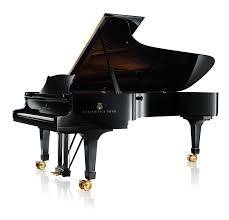
History of the piano
#history The piano is a keyboard and struck string instrument developed by Bartolomeo Cristofori in the 18th century from the harpsichord and which differs from its predecessors precisely because of its ability to produce sounds with different intensities. However, its origin dates back thousands of years in time, since it is the product of the evolution of different musical instruments.
Its current name is an apocope or shortening of the Italian expression pianoforte (piano: “soft” and forte: “strong”). This terminology comes from the name that the creator of the modern piano, Bartolomeo Cristofori, gave to this instrument: harpsichord col piano e forte, which can be translated as “harpsichord with soft and strong [sound]”.
PREDECESSORS OF THE PIANO
The oldest stringed musical instrument related to the piano is the zither. The zither, whose origin dates back to the Bronze Age (approx. 3000 to. C.), comes from Africa and South-East Asia. It consisted of a set of tensioned strings placed on a wooden soundboard similar to that of a guitar. In fact, the word “guitar” comes from zither.
What is not so clear is where “zither” comes from, although most sources consider it to come from the Aramaic expression “qath‧róhs” which probably gave rise to the Greek voice “kithára” (which means “stringed instrument”). From there, it came to Latin (“citara”) and, later, to Spanish “guitar”.
The next known instrument in the evolutionary line of the piano is the monochord. The monochord consisted of a single long string that was vibrated on a wooden soundboard. Apparently, some Greek mathematicians, such as Pythagoras and Euclid, used this instrument to carry out studies on geometry and on the relationships between musical intervals.
Throughout the Middle Ages and Renaissance, different keyboard instruments with struck strings were developed, such as the hurdy-gurdy and the escaque. In this effort, struck string instruments evolved in the psalter, which differs from the previous ones by its trapezoidal shape and its strings of different lengths. The goal of the creators of these instruments was to ensure that the strings were not hit with the fingers but with some mechanism.
Thus, the psalter gave rise to the harpsichord and, later, to the harpsichord, with a mechanism much closer to the piano. Both instruments were very popular in the 17th century.
- Comments (3)
- Recommended
- Milestones



Here are your recommended items...
Here are your milestones...






